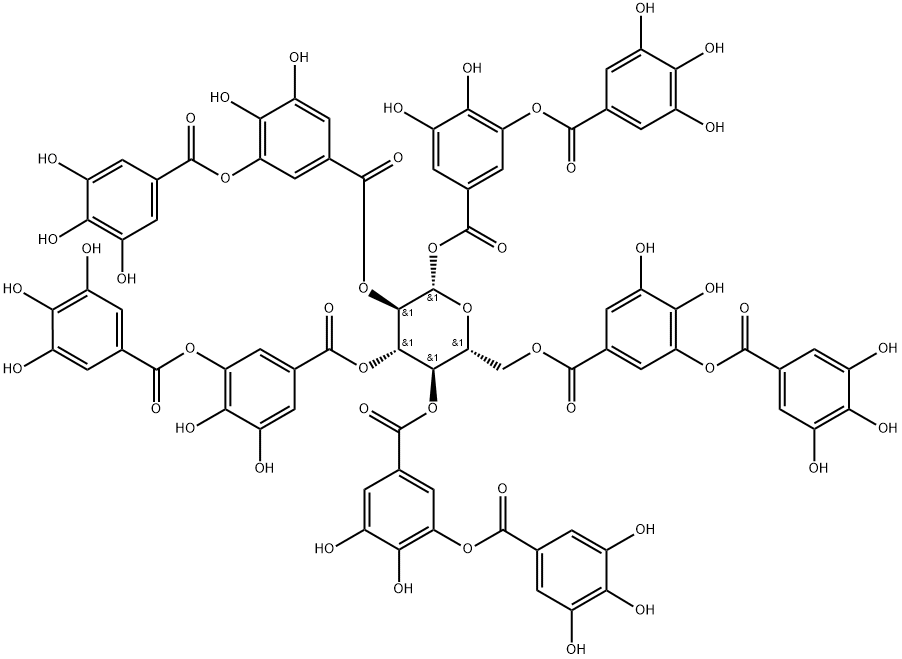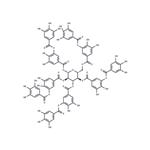Gallotannin is a polyphenol of gallic acid that has been found in various plants and has antioxidant, anti-inflammatory, antiviral, and antiproliferative biological activities. Gallotannin (1 μM) inhibits the intracellular production of reactive oxygen species (ROS) and DNA damage induced by phorbol 12-myristate 13-acetate (TPA; ) in human polymorphonuclear neutrophils (PMNs). It also decreases TPA-induced nitric oxide release by 90% from primary rat hepatocytes when used at a concentration of 0.5 mM. Gallotannin inhibits hepatitis C virus (HCV) entry into Huh7.5 human hepatoma cells (IC50 = 5.8 μM) and inhibits the proliferation of MDA-MB-231 and MCF-7 human breast cancer cells (IC50s = 2.5 and 4 μM, respectively). In a rat model of middle cerebral artery occlusion (MCAO), it increases superoxide dismutase (SOD1) protein levels and decreases the amount of proteins modified by malondialdehyde (MDA) in ischemic brain tissue when administered at a dose of 10 mg/kg.
tannin: One of a group of complexorganic chemicals (see depsides) commonlyfound in leaves, unripe fruits,and the bark of trees. Their functionis uncertain though the unpleasanttaste may discourage grazing animals.Some tannins have commercialuses, notably in the production ofleather and ink.
Any of several yellow organic compounds found in vegetable
sources such as bark of trees, oak galls, and
tea. They are used in tanning animal skins
to make leather and as mordants in dyeing.
Tannic acid (a type of tannin) is a white
solid heterocyclic organic acid extracted
from oak galls and used for making dyes
and inks.

